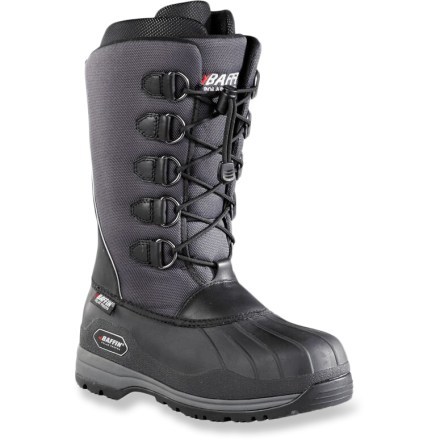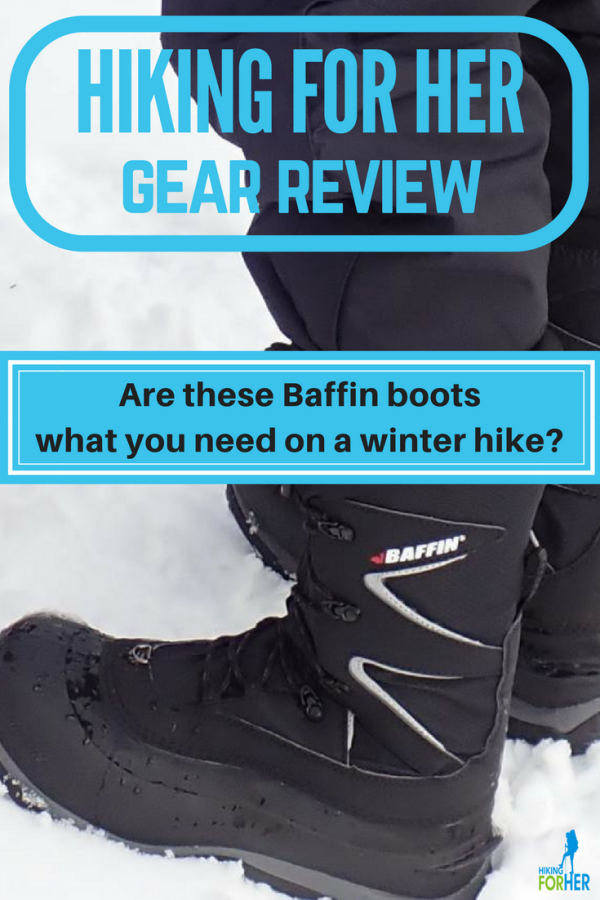
Baffin Boots Review:
What Makes These Waterproof
Winter Boots Stand Out
By Diane Spicer
This Baffin boots review was entirely my idea.
Two reasons:
- My ten year old pair of Itasca boots fell apart, literally, as I was putting them in the Jeep for a snowshoe outing.
- I've heard great things about Baffin construction and quality. Canadians know about snow, right?
So this review is all about answering the burning question of whether (or not) Baffin boots are a viable winter option for female hikers.
I purchased these boots* with my own money, and all comments and photos belong to me.
*Baffin Drift series, SnoGoose, women's size USW 9.
If you purchase a pair of Baffins using this REI link or this Amazon link, Hiking For Her will receive a small percentage to keep these free hiking tips flowing - without raising your price one cent.
A note about the Baffin series
This Canadian boot company is serious about getting the correct boots on your feet, depending upon your activity.
The Drift series is just one of many to consider:
- Arctic: if you're heading into -100C/-148F conditions
- Great Lakes: waterproof in all weather conditions
- Ultralite: as you would expect, 2 pounds or less onyour feet
- Ease: fast and easy on and off
- Urban: Not for the trail, but they're lookin' good!
- Soft Shell: lower cut, for playing well with snowshoe bindings or for winter trail hiking
- Miku: tapered and designed for around town in 0F conditions or higher
and more with each new season!
Consider what you want to do with your Baffin boots, then dial in the style.
Baffin boots review:
the boot specifications
These are seriously warm boots, as you can see with these specs:
- double weave waterproof 900 denier nylon upper
- lightweight rubber base
- cold resistant EVA midsole
- rated to -40F
- removable inner boot liner with multiple layers
- waterproof nylon snow collar way above the ankles
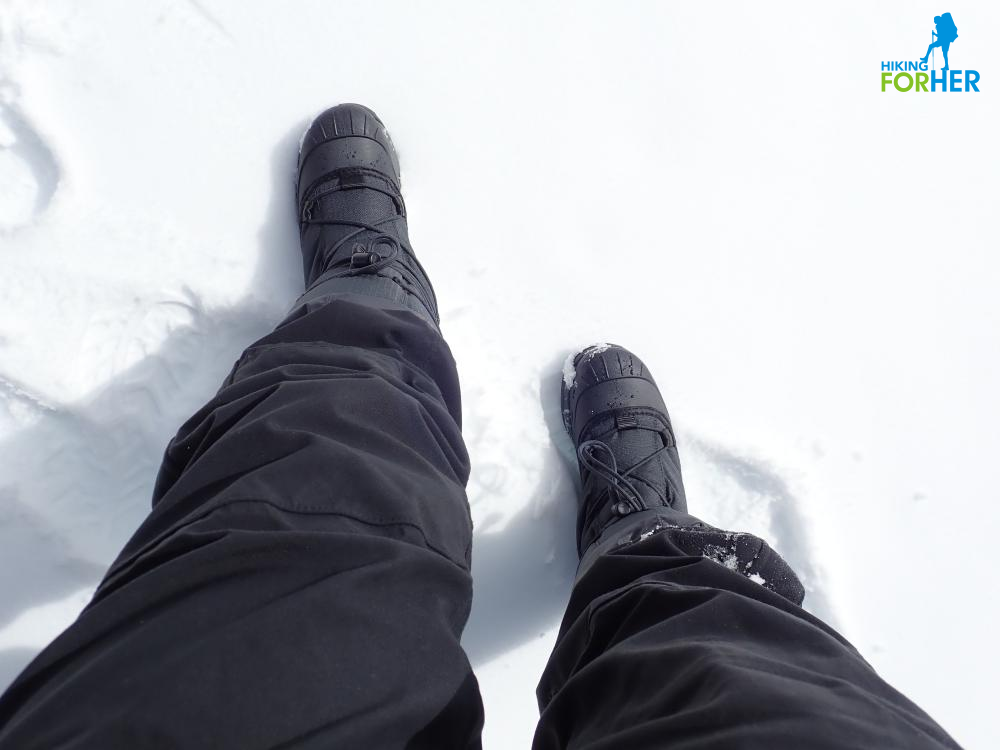 Cozy feet, no matter how much snow you slog through
Cozy feet, no matter how much snow you slog throughNow let's take a look at the performance of each of these features during a snowshoe trip in the Cascades Range of western Washington.
Baffin boots review:
setting the scene
Snowshoeing in Mount Rainier National Park can be an interesting proposition.
Some years, there is abundant snowfall at the lowest elevations, right down to the Paradise entrance gate.
Other years, you have to drive way past Longmire, up and up and up toward Paradise, to get your first good snow.
Or, you can work for it.
Which is what happened during this Baffin boots review, beginning at the low elevation Kautz Creek trailhead and continuing upwards for 3500+ feet of elevation gain over several hours.
And, of course, the descent.
Snowshoes were carried until the glorious snowline was reached.
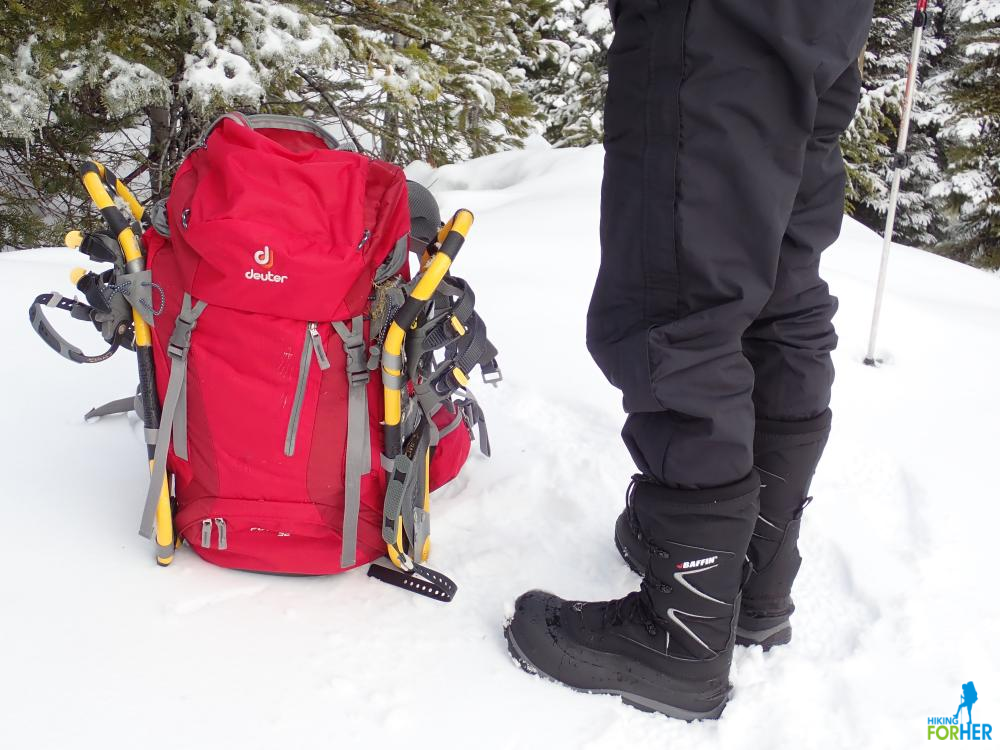 The snow doesn't look too deep - under a thick grove of trees!
The snow doesn't look too deep - under a thick grove of trees!Weather conditions were highly variable that day:
- calm, clear and 30F above 3000 feet
- a fairly dense fog layer at lower elevations
Essentially, two different weather conditions, just right for a thorough review of these winter boots!
Baffin boots review:
performance of each feature
When you pay good money for a new pair of winter boots, you want to be sure your feet will stay warm, dry and uncramped throughout your exertions.
Nitty gritty time!
Construction features: shell & soles
Always start with the soles of a pair of boots, to get an idea of construction quality.
In the Drift series of Baffin boots:
- The shell is Arctic™ Rubber: flexible, lightweight, and cold resistant synthetic blend
- Midsole is EVA (ethylene vinyl acetate) for cushioning and insulation
- Rubber outsoles for durability and protection
You can bend these boots if you torque the toes away from the heel, but not a lot.
They're built for durability and cold protection.
And they delivered! Plus, they were comfortable right out of the box, and remained so during the hours and miles of the day's exertions.
The toe box was roomy enough to accommodate two pairs of socks - plenty of wiggle room to get blood flowing in the toes.
Construction: uppers
The tough, durable, lightweight and waterproof nylon used to build the uppers of these boots is going to see you through all sorts of weather, and every trail condition you'll run into during your early fall through spring hiking.
The uppers are a generous length, adding an additional layer of insulation to my lower legs to support my base layer and waterproof rain pants.
They cinch down to prevent snow or debris from entering the boots, a great feature for off trail wanderings.
Liners
Warm, cozy, welcoming ... everything liners should be.
Tip:
Take them out and dry them after a sweaty hike, even if they don't "feel" wet.
These liners are replaceable, which is a nice feature with boots that are built to last.
With my decade long love affair with Itascas, I went through two pairs of replacement liners. There's only so much pounding they can take.
- So expect to replace yours at some point.
On and off ease
You can step into these boots if the lacing is loosened.
No need to fiddle around with finding just the right angle to slide in your foot.
You can skip the fun little "hop around and yank" dance, too.
The side to side lacing with toggle allows you to expand or tighten down the fit with one hand, even wearing gloves.
Please take a moment to do that before you set off, because the fit is critical to your comfort and safety.
- Too loose, and socks will begin to rub your skin the wrong way(s).
- Too tight, and blood flow diminishes to your toes, creating coldness and possible repercussions for injury from loss of sensation.
What I loved about
these Baffin boots
My feet never felt an instant of hesitation about plowing through snow, mud, or stream crossings in these Baffin boots.
The warmth generated by my muscle contractions heated up the boots quickly, and kept my usually cold toes at a comfortable temperature.
You might ask if these boots are too warm for a 30F degree day, and I'd say, it depends.
- Older women (like me) will appreciate the constant warmth.
- Anyone dealing with the cold feet of Raynaud's syndrome will appreciate these boots.
- Young folks might find them a bit of overkill for a temperate winter day of vigorous exercise.
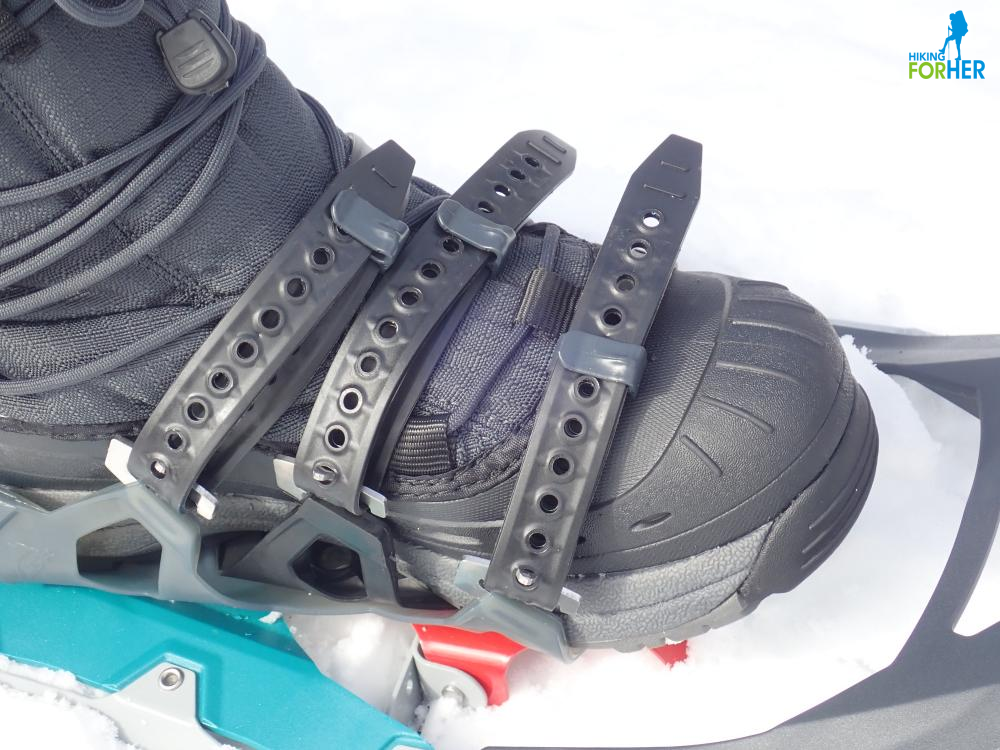 Snowshoe bindings play nicely with these boots
Snowshoe bindings play nicely with these boots
More to love
in this Baffin boots review
The lightness of these boots on my feet were a dream come true.
It's hard enough to break trail on snowshoes, let alone wear five pound boots on each foot.
- These are half that weight, and you quickly forget you even have them on.
- They also shed snow quickly.
Also, not having to wear gaiters (thanks, high collar around my calves!) lightened the leg lift load.
On the other hand, if you're snowshoeing or winter hiking for weight loss or conditioning, you'll want a heavier load on your feet - so these boots might be too feather weight for you.
Or, you can tie rocks to them ;)
What I didn't enjoy
about these boots
This is nothing against the boot design, only an observation in this Baffin boots review.
At the lower snow free elevations, these boots were not able to support my arch as well as I would have liked.
Caveat: I have abnormally high arches, so this might not be a problem for you.
Also, cushioning socks with extra arch support like these might help.
Supportive tip:
REI Co-op has a good overview of how to choose insoles.
Another thing: the soles are not high grip, so don't depend on them giving you stability on icy or muddy surfaces.
- Throw on your traction devices, like Microspikes, and you'll be all set!
A note of caution about fit
An important thing to mention in this Baffin boots review to save you some trouble:
- Baffin women's boots tend to run small, so order up one size.
My size US 9 boots were just right with two pairs of knee high socks: thin liners and thicker warm socks.
- My normal boot size: US 8, wide toe box.
I always like to have some room to wiggle my toes.
Another thing to note: you need to adjust the boots to your particular calf and ankle dimensions, or they'll feel too loose or tight on your feet.
The cable and lock adjustment system is easy to use, with or without gloves.
Baffin boots review:
conclusions
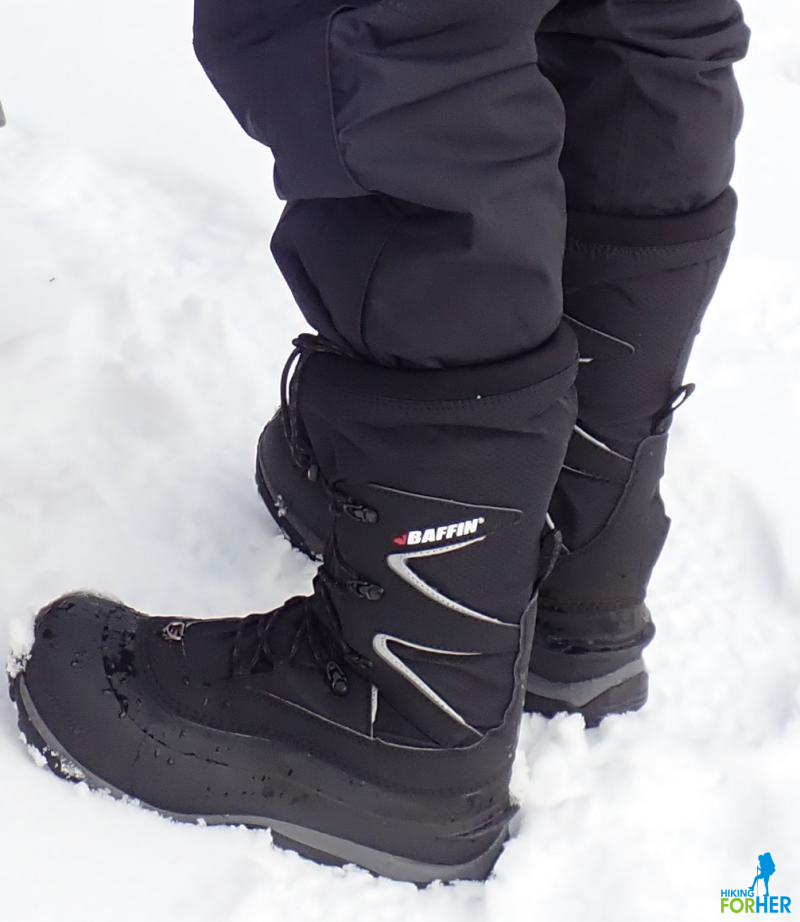
I've found a suitable replacement for my worn out snowshoeing winter boots, and I'm a happy woman!
These boots conform to, and support, the unique dimensions of my feet, given the receptivity of the liners to my body weight carrying a backpack.
The rugged soles and bomb proof nylon uppers weigh almost nothing, compared to the solid support and protection they deliver.
- Although solid, they don't result in a jarring, inflexible walking experience.
All in all:
Consider these boots a great investment in the health and well being of your hard working feet in cold weather.
Then strap on a pair of snowshoes (see my newest snowshoe review), and go stomp some snow!
Add this to your Pinterest boards!
Home page > Best Hiking Gear Reviews >
Baffin Boots Review For Winter Hiking And Snowshoeing
|
I get emails all the time about what I wear, eat, carry and love to use on the trail. That's
why I provide affiliate links to you: the best gear that I use myself and have seen used by other hikers is instantly
available for your consideration, and the gear company sends a few
pennies per dollar to this reader-supported hiking website. There is no added cost to you! Everyone ends up a winner: Great gear for you, strong gear companies, and more free hiking tips for everyone. Thanks very much for your support. It's warmly and sincerely appreciated. It also helps send these hiking tips to all your virtual trail buddies around the globe. |
 |
